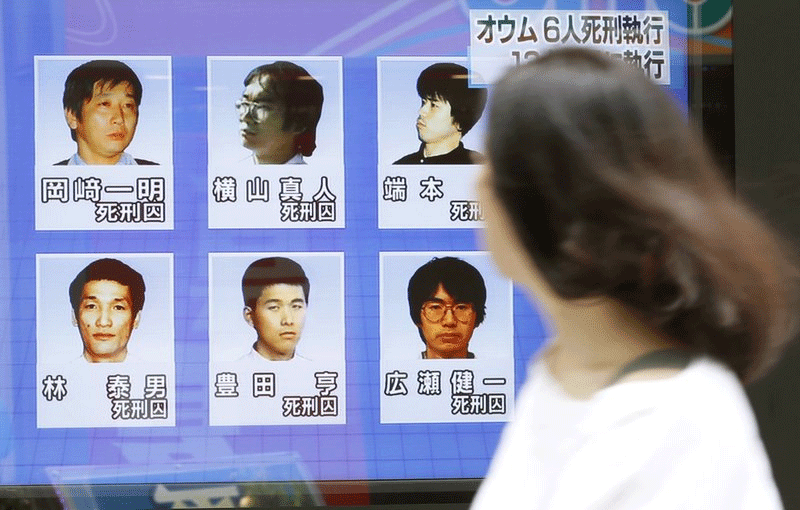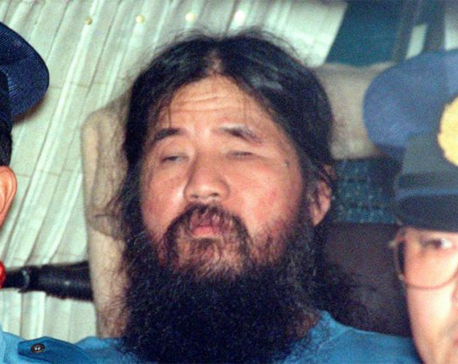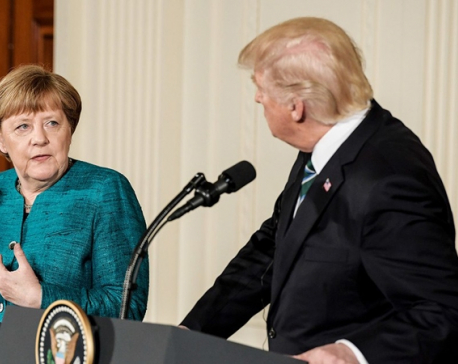
OR
Japan hangs 6 more members of cult behind subway gas attack
Published On: July 26, 2018 12:48 PM NPT By: Associated Press

TOKYO, July 26: The last six members of a Japanese doomsday cult who remained on death row were executed Thursday for a series of crimes in the 1990s including a sarin gas attack on Tokyo subways that killed 13 people.
Thirteen members of the group had received death sentences. The first seven, including cult leader Shoko Asahara, were hanged about three weeks ago. Japan has never executed so many people in one month, Justice Minister Yoko Kamikawa said. She called their crimes unprecedentedly heinous and said they should never be repeated.
The cult, which envisioned overthrowing the government, amassed an arsenal of chemical, biological and conventional weapons in anticipation of an apocalyptic showdown. Named Aum Shinrikyo, or Supreme Truth, it was blamed for 27 deaths before authorities raided its compound near Mount Fuji in 1995 and captured Asahara nearly two months later.
The group’s most notorious crime was the March 20, 1995, subway attack that sickened 6,000 people and sowed panic during the morning commute. The attack woke up a relatively safe country to the risk of urban terrorism.
Cult members used umbrellas to puncture plastic bags, releasing sarin, a deadly nerve agent, inside subway cars just as the trains approached the Kasumigaseki station, Japan’s main government district. Commuters poured out of stations, and the streets were soon filled with troops in Hazmat suits and people being treated outside.
Kamikawa said it was a terrorist attack that terrified people even outside Japan.
Four of the six executed Thursday released sarin on the subway. The two others were convicted in other crimes, including the 1989 murders of an anti-Aum lawyer and his wife and 1-year-old baby and a 1994 sarin attack in the city of Matsumoto in central Japan, which killed seven people and injured more than 140. An eighth victim in Matsumoto died after being in a coma for a decade.
The executions were announced only after they had happened, as is the practice in Japan.
Asahara, whose original name was Chizuo Matsumoto, founded Aum Shinrikyo in 1984. The bearded, self-proclaimed guru recruited scientists and others to his cult, attracting people who were disillusioned with a modern, materialistic lifestyle.
During an eight-year trial, he talked incoherently, occasionally babbling in broken English, and never acknowledged his responsibility or offered meaningful explanations.
The cult once claimed 10,000 members in Japan and 30,000 in Russia. It has disbanded, though nearly 2,000 people follow its rituals in three splinter groups, monitored by authorities.
You May Like This

Japan cult leader behind gas attack, followers are executed
TOKYO, July 6: Doomsday cult leader Shoko Asahara and six of his followers were executed Friday for their roles in... Read More...

Syria war: At least 70 reported dead in suspected gas attack
April 8: Rescuers and medics say at least 70 people have died in Syria in a suspected gas attack in... Read More...

Infographics: G20 members more confident in Merkel than Trump
According to a Pew Research Center survey, most G20 members have far more confidence in Angela Merkel’s leadership than Donald... Read More...

Just In
- World Malaria Day: Foreign returnees more susceptible to the vector-borne disease
- MoEST seeks EC’s help in identifying teachers linked to political parties
- 70 community and national forests affected by fire in Parbat till Wednesday
- NEPSE loses 3.24 points, while daily turnover inclines to Rs 2.36 billion
- Pak Embassy awards scholarships to 180 Nepali students
- President Paudel approves mobilization of army personnel for by-elections security
- Bhajang and Ilam by-elections: 69 polling stations classified as ‘highly sensitive’
- Karnali CM Kandel secures vote of confidence


















Leave A Comment